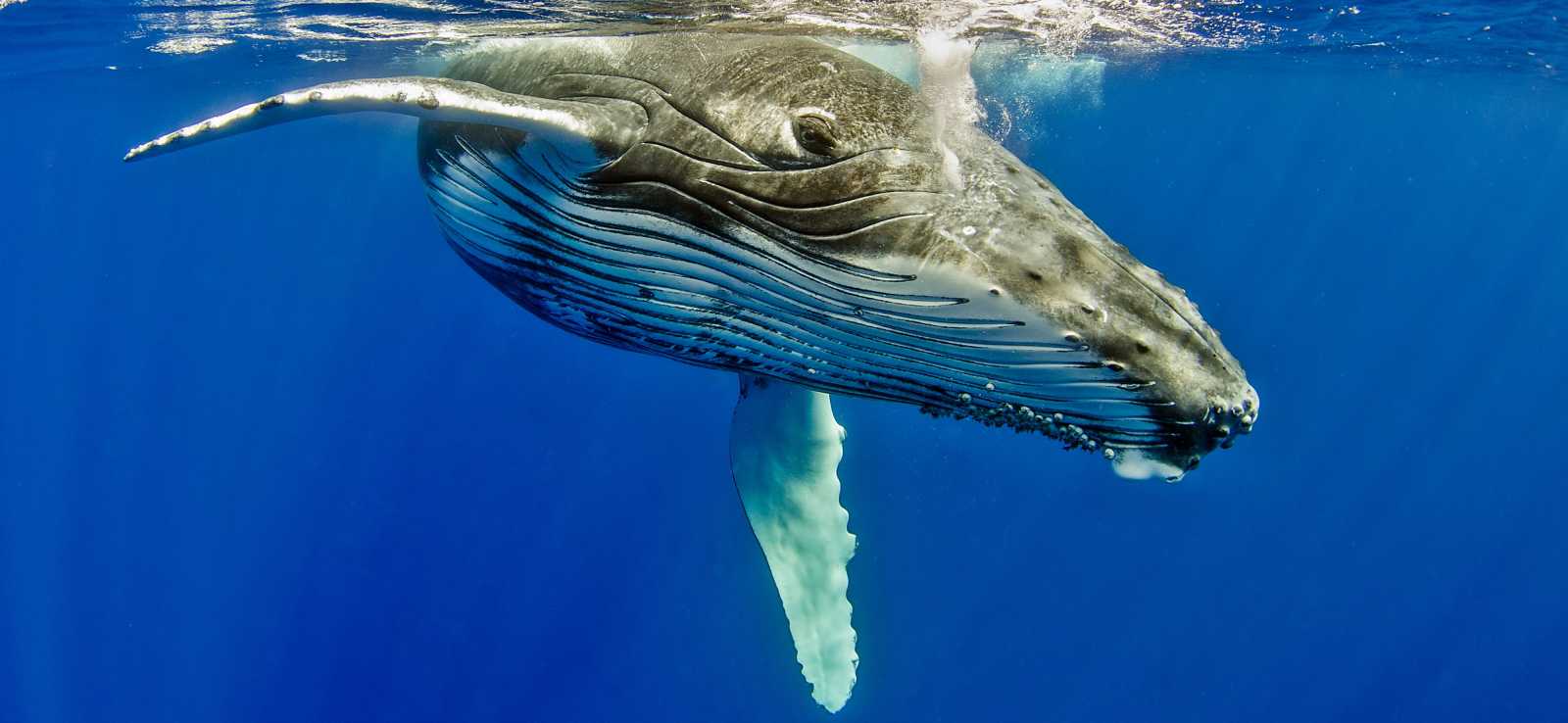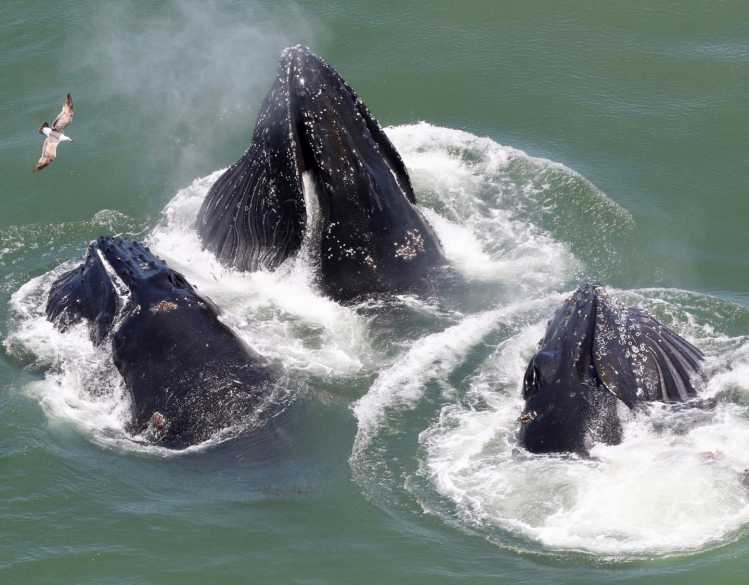
Humpback Whale
Megaptera novaeangliae
Learn More About Humpback Whales
The humpback whale was given its name because of the shape of the hump on its dorsal fin and the distinctive look of its back when diving. Its scientific name, Megaptera, means, "large-winged," referring to its long, white, wing-like flippers that are often as long as one-third of the animal's total body length.
Humpbacks are gray or black, with white patches on their flippers, parts of their chest and belly, and sometimes the underside of the tail flukes. Each whale has its own unique pattern on the underside of its tail fluke, which serves as a sort of fingerprint for identifying individual whales.
Unique to humpbacks are the wartlike, round bumps or tubercles that are seen on the head forward of the blowhole and on the edges of the flippers.
Humpbacks found in the Northern Hemisphere reach an average length of 49 to 52 feet and southern humpbacks reach 60 feet. Females are generally larger than males, with the average weight for a mature adult being 50,000 to 80,000 pounds.
What do they sound like?
The greatest threats to marine mammals are caused by people, but we can also be their greatest champions.
Sign up for email from The Marine Mammal Center to stay updated on how you can be an advocate and champion for marine mammals like humpback whales.
Habitat & Population Status
Humpbacks are found in waters throughout the world and follow definite migration paths from their summer feeding grounds to warmer waters in the winter.
There are three distinct populations of humpbacks in the North Pacific: a North Pacific stock that winters in Central America and migrates to the California coast and British Columbia in the summer; a Central North Pacific stock that winters in Hawai‘i and migrates to Canada and Alaska in the summer; and a Western North Pacific stock that winters near Japan and likely migrates to the Bering Sea in the summer.
Humpbacks are among the most endangered whales with fewer than 10 percent of their original population remaining. The current world population is estimated between 35,000 to 40,000 individuals, including 2,900 individuals that frequent the coasts of Washington, Oregon and California. The main threats they face in the ocean are ship strikes and entanglement in ocean trash and fishing gear.


Name a Whale
Humpback whales like this one can be identified by the unique markings on their tail flukes, allowing researchers to track individuals through whale sighting data. And with a gift to The Marine Mammal Center, you can name one of these whales for yourself, or in honor or memory of a loved one.
Breeding & Behavior
Female humpback whales become sexually mature at 6 to 10 years old and give birth every two or more years from December to February, with pregnancies lasting for 12 months.
Their calves are born weighing about 2,000 pounds and reaching 15 feet long. A young whale will stay with its mother and nurse for six to 10 months. When weaned, the calves are 24 to 27 feet long.
Acrobatic humpbacks regularly breach, stroke each other and slap the water with their flippers and flukes. Scientists believe these activities are forms of communication because they create a great deal of noise and can be heard at long distances under water.
Humpbacks swim in pods (or groups) of up to a dozen at calving grounds, and in smaller pods of three to four during migration.
As baleen whales, humpbacks expand their 14 to 35 throat pleats to take in water. This water is then strained by their baleen as small fish such as krill or herring, as well as plankton remain in their mouth. Their 270 to 400 baleen plates are dark, and each is about two and a half feet long.
Humpbacks use several different feeding methods. One of those methods is called "lunge feeding," during which humpbacks will plow through concentrated areas of food with their huge mouths open, collecting large quantities of food and water.
Another method called "bubble net feeding” is unique to humpback whales and occurs when one or several whales blow a ring of bubbles from their blowholes that encircle a school of krill or fish. The whales then swim through the "net" with their mouths agape, taking in the food. Unlike other baleen whales, they can often be seen feeding cooperatively.
Humpbacks are best known for their haunting vocalizations or "singing." They have a rich repertoire that covers many octaves and includes frequencies beyond the threshold of human hearing. These songs, thought to be sung by males, last as long as 20 minutes and are repeated, often with slight changes.
Each year, the song undergoes changes from the year before, but all males in a population sing the same song. When a whale is singing, it floats suspended in the water, head down and relatively motionless. Behavior such as dominance, aggression and mate attraction may be related to singing.



















